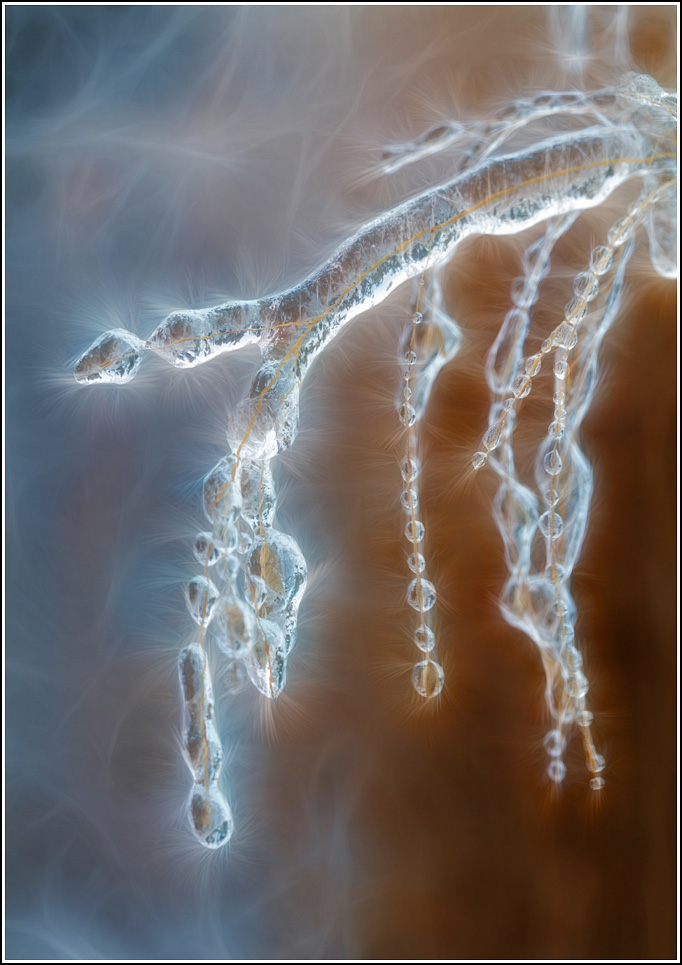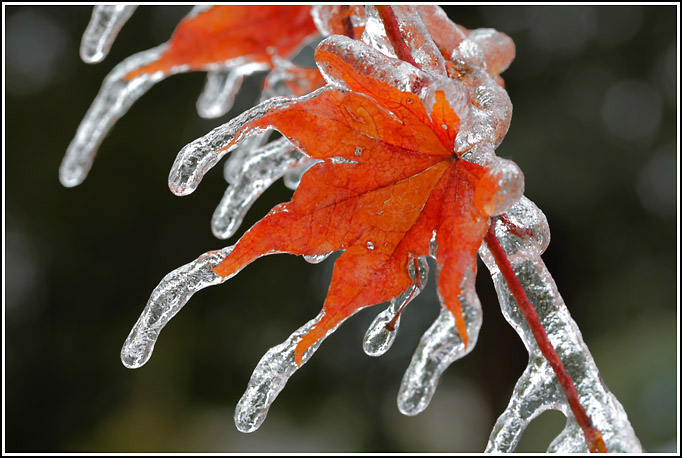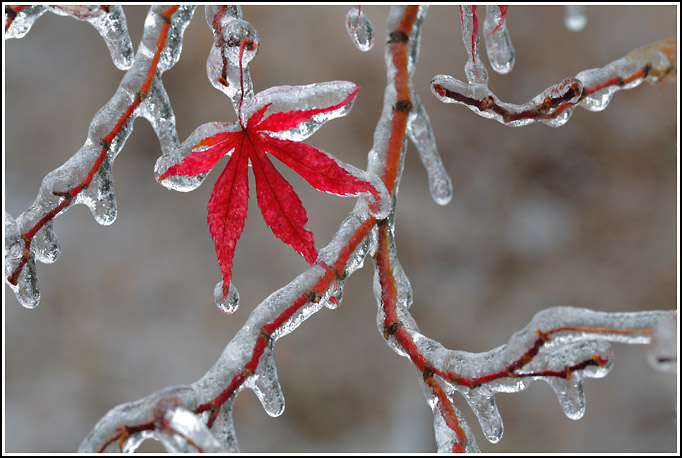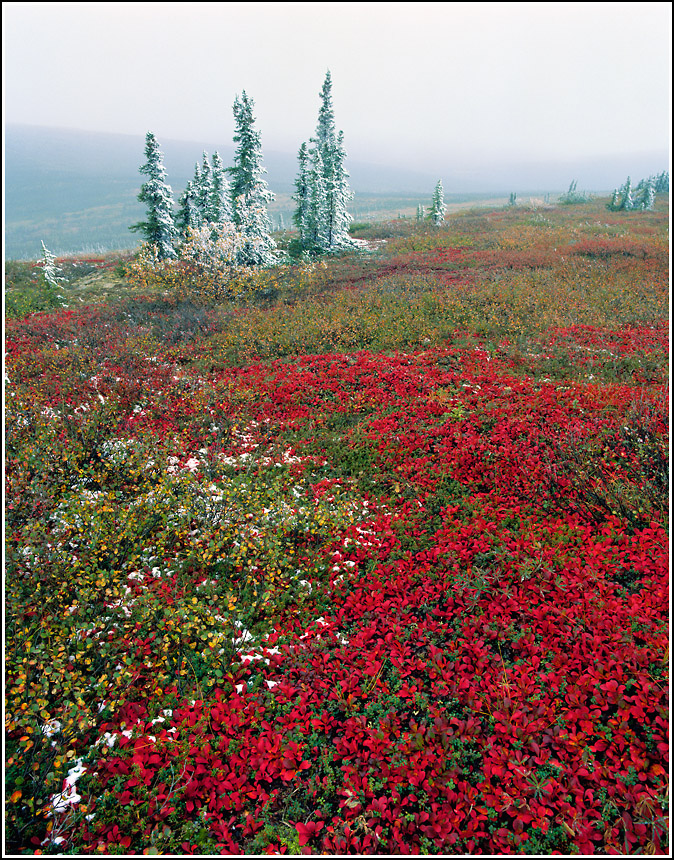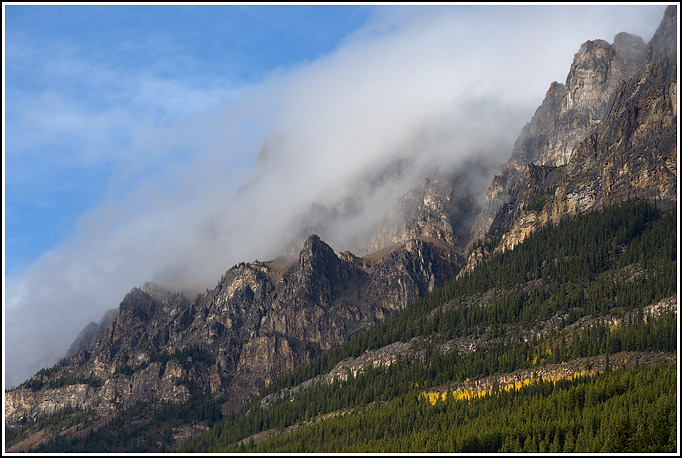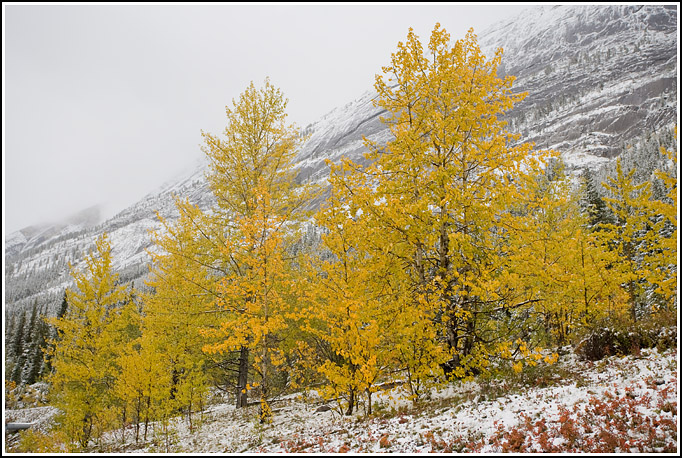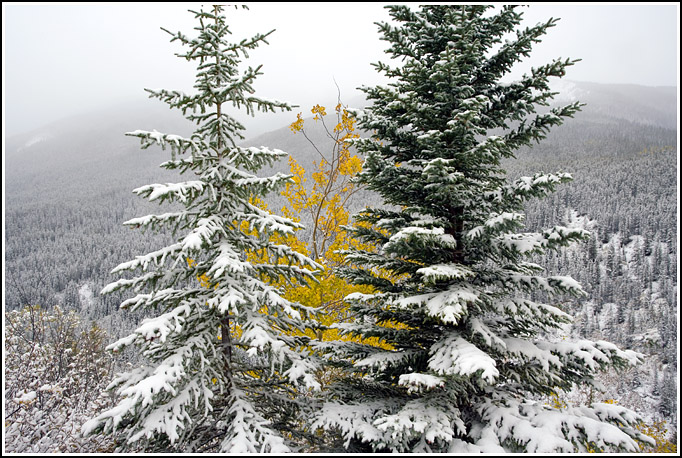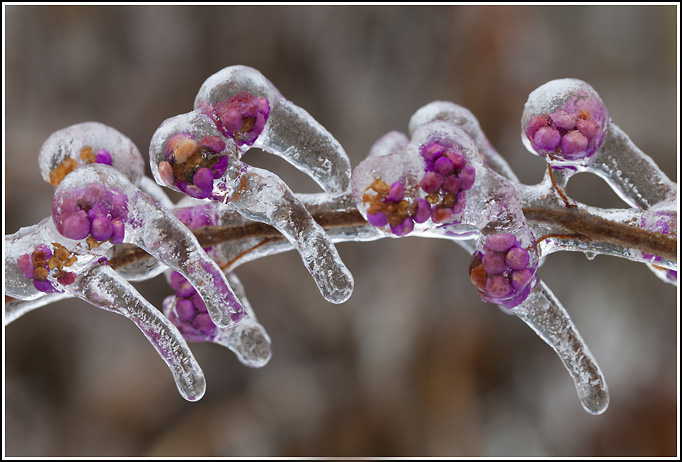
I have no idea what I photographed here. I will go back when it’s a bit warmer and find out what hatches from the ice globs.
All I know is that it appealed to me and that it made a pretty composition.
The weight of the accumulating ice caused branches to bend (or break) and this explains why the icicles seem to be defying gravity laws…
This image was taken with 100 Canon Macro lens. A careful compromise had to be made regarding lens aperture (ie depth of field) as the background was relatively busy. The camera was on the tripod and there was no wind. Therefore shutter speed choice did not need to be a consideration.
PS: from very reliable source: Sara Heinonen: “Pretty sure this is Euonymus Americanus, Peter. A native species related to burning bush.” Thank you Sara! (Sara is a landscape artist and a writer.)
